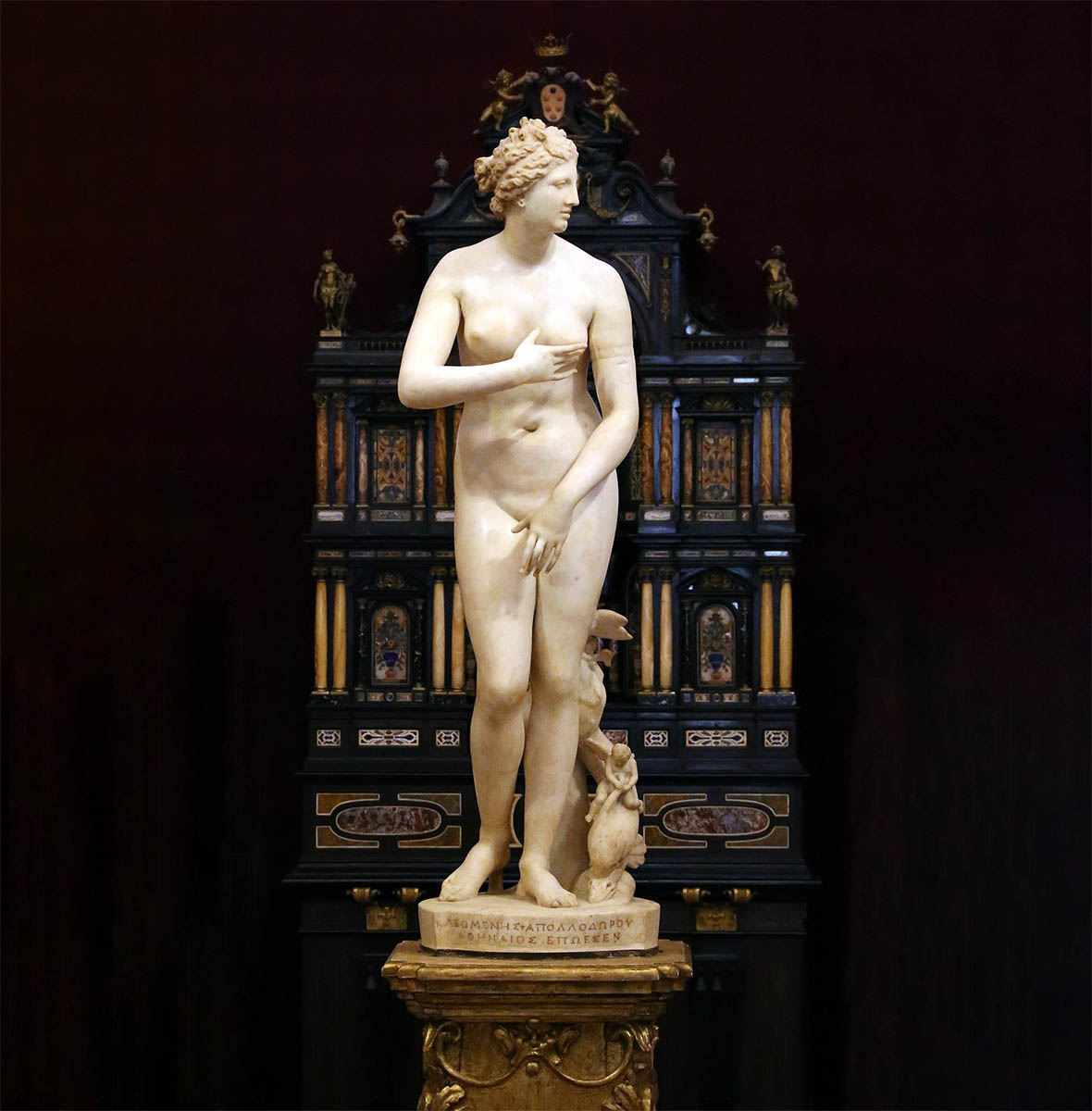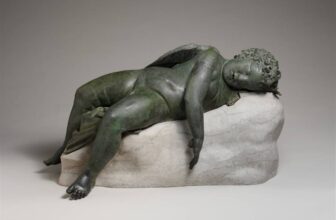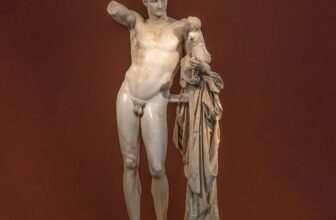
What Does the Medici Venus Represent
In the heart of Florence, where Renaissance art still breathes through the marble halls and painted ceilings of the Uffizi Gallery, one sculpture stands out as a timeless embodiment of beauty, grace, and myth: the Medici Venus. This celebrated masterpiece is not just a statue of a goddess but a mirror into humanity’s eternal fascination with perfection, mythology, and the ideals of beauty that have shaped art for centuries.
The Medici Venus is more than marble; it is myth carved into stone, legacy etched into time, and symbolism captured in form. To understand why this sculpture is famous and revered, one must journey through its meaning, its representation, its symbolism, and its enduring place in history.
A Glimpse at the Medici Venus
The Medici Venus is a larger-than-life marble sculpture of Aphrodite (Venus), the Greek goddess of love and beauty. Dating back to the Hellenistic period (between the 1st century BC and the 1st century AD), the work is believed to be a Roman copy of a much earlier Greek original, possibly inspired by the celebrated Aphrodite of Knidos created by Praxiteles in the 4th century BC.
Today, the sculpture resides in the Uffizi Gallery in Florence, Italy, where it has been admired for centuries as one of the most exquisite examples of classical antiquity. It once stood in the Villa Medici in Rome, hence the name “Medici Venus,” connecting the piece forever to the powerful Florentine family who collected and preserved it.
The statue depicts Venus emerging from the sea, modestly covering herself with her hands in a gesture often described as the “Venus Pudica” pose (“modest Venus”). This pose, characterized by the goddess shielding her body while simultaneously drawing attention to it, became a prototype in art, echoing across centuries in countless depictions of the female nude.
What Is the Meaning of the Medici Venus?
At its core, the Medici Venus represents idealized feminine beauty and divine allure. To the ancients, Venus (Aphrodite) was not merely a goddess of love but the very essence of irresistible charm, sensuality, and fertility. The sculpture embodies these ideas in physical form, presenting a goddess both modest and provocative, fragile yet powerful.
The meaning of the sculpture can be understood on several levels:
Mythological Meaning – The statue recalls Venus’s mythical birth from the sea foam, a moment that symbolizes the arrival of beauty into the world. Her stance suggests both innocence and seduction, evoking the paradox of divine love, pure yet all-consuming.
Philosophical Meaning – In classical philosophy, beauty was seen as a reflection of cosmic harmony and order. The Medici Venus, with its flawless proportions, represents this harmony, offering viewers a glimpse of an ideal that transcends the human.
Cultural Meaning – To the Medici family and Renaissance admirers, the statue was not only a work of art but a trophy of cultural sophistication, proof of their connection to the grandeur of antiquity. Displaying such a piece signaled both intellectual refinement and political power.
What Does the Medici Venus Represent?
The Medici Venus represents love, beauty, and the eternal feminine. But it also goes beyond being a portrait of a goddess; it embodies themes central to human life and artistic expression.
The Divine Feminine – She is a goddess, and thus represents the sacred nature of femininity. Her form celebrates womanhood as the giver of life and the object of desire.
The Duality of Modesty and Seduction – Her gesture of covering herself does not hide her body but emphasizes it. This tension between concealment and revelation reflects the eternal dance of attraction.
The Ideal of Beauty – In the ancient world, beauty was linked to virtue, goodness, and truth. The Medici Venus’s carefully proportioned body was not just aesthetically pleasing but philosophically significant, it represented an idealized order of existence.
Cultural Continuity – For Renaissance viewers, the statue represented the rebirth of classical ideals. By celebrating Venus, they were celebrating the humanistic values of antiquity that had been revived during the Renaissance.
The Symbolism of the Medici Venus
Symbolism lies at the very heart of why the Medici Venus has remained so captivating for centuries. To understand her fully, one must unpack the layers of meaning embedded in her pose, her form, and her cultural context.
1. The Pose: Venus Pudica
Her modest stance, covering her breasts with one hand and her pubis with the other, is symbolic of chastity, yet the gesture paradoxically directs attention to the very parts she seeks to hide. This duality of modesty and eroticism reflects the paradox of love itself: both pure and sensual, sacred and profane.
2. Nudity as Purity and Perfection
In classical art, nudity was not mere exposure but a symbol of divine perfection. To be nude was to be stripped of earthly concerns, revealing the harmony of the human form as an expression of cosmic balance. Venus’s body is not just flesh, it is the mathematical ideal of beauty made visible.
3. Feminine Power
Though seemingly vulnerable, the goddess holds immense symbolic power. She embodies the idea that beauty itself is a form of dominance, capable of bending gods and mortals alike to her will. Her stance, therefore, is not weakness but a demonstration of beauty’s commanding presence.
4. Cultural Symbolism
For the Medici, who acquired the sculpture, it symbolized wealth, prestige, and enlightenment. Possessing such a statue was a statement of cultural supremacy, an assertion that Florence was the rightful inheritor of classical antiquity’s legacy.
Why Is the Medici Venus Famous?
The Medici Venus is famous for several interconnected reasons:
Artistic Excellence – The sculpture is a near-perfect example of Hellenistic artistry, showcasing the mastery of anatomy, balance, and emotion in marble. Its technical brilliance has been admired by artists, scholars, and viewers for centuries.
Historical Legacy – The statue’s connection to the Medici family, and later its display in the Uffizi, elevated it to iconic status. It became one of the most visited and studied works of antiquity during the Renaissance and beyond.
Influence on Art – The Medici Venus served as a model for countless later works, inspiring Renaissance masters such as Botticelli, who drew on its imagery for his famous “Birth of Venus.” Its pose, the Venus Pudica, became a canonical motif in Western art.
Cultural Fascination – Beyond its artistry, the statue fascinated viewers with its sensuality. For centuries, the Medici Venus was considered one of the most beautiful nudes in existence, sparking admiration, desire, and scholarly debate alike.
Enduring Symbol of Beauty – Even in modern times, the Medici Venus continues to embody an idealized image of beauty that transcends time and culture. It is not just an artifact but an enduring touchstone for discussions of art, gender, and aesthetics.
Where Is the Medici Venus Located?
Today, the Medici Venus is housed in the Uffizi Gallery in Florence, Italy, one of the world’s greatest museums of art and culture.
Original Setting: The statue was originally displayed in the Villa Medici in Rome, part of the Medici family’s grand collection of antiquities.
Move to Florence: In the 17th century, the statue was brought to Florence, where it became one of the highlights of the Medici collection.
Current Location: The sculpture now stands in the Uffizi’s Tribune room, a specially designed octagonal chamber that showcases some of the gallery’s most prized treasures. For centuries, visitors from across Europe have traveled to Florence just to glimpse this masterpiece, making it one of the most admired works of classical art in the world.
The Life of the Medici Venus
Imagine the journey of this marble goddess. Carved in the Hellenistic age, she first stood as an offering to beauty and love in a Roman villa, admired by citizens who saw in her a reflection of divine perfection. Centuries later, as Rome fell and the medieval world rose, she lay hidden, forgotten under earth and rubble, until rediscovery during the Renaissance breathed life into her again.
The Medici family, ever eager to associate themselves with the grandeur of antiquity, claimed her as part of their collection. They placed her in their villa, where she dazzled artists and scholars alike. By the time she reached Florence, she was no longer just a statue but a symbol of cultural rebirth, a marble muse inspiring new generations of art.
During the Grand Tour of the 18th century, aristocrats from England, France, and beyond traveled through Italy to complete their education. For many, seeing the Medici Venus in the Uffizi was the pinnacle of their journey, a moment to behold the goddess herself, to stand in awe before a beauty that had survived the fall of empires.
Medici Venus The Eternal Goddess
The Medici Venus is more than a sculpture, it is a story carved in stone. It tells of a goddess who rose from the sea, of a civilization that worshiped beauty, of a Renaissance family who preserved antiquity’s treasures, and of countless generations who have stood before her in admiration.
Her meaning lies in the ideals she represents: love, beauty, modesty, seduction, and the eternal feminine. Her symbolism transcends time, reminding us that beauty has always been both sacred and powerful. She is famous because she embodies the very essence of art’s purpose, to capture the eternal in a fleeting world.
And so, in the quiet halls of the Uffizi, the Medici Venus still stands, modestly covering herself while commanding the gaze of all who pass by. A goddess in marble, she remains a timeless beacon of beauty, reminding us why humanity has always turned to art: to seek, to admire, and to eternalize the divine in the human form.




